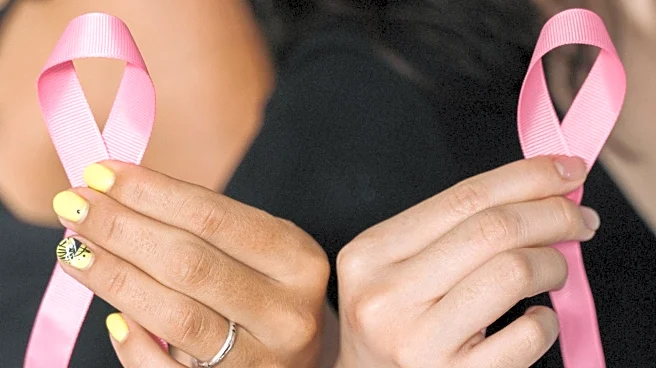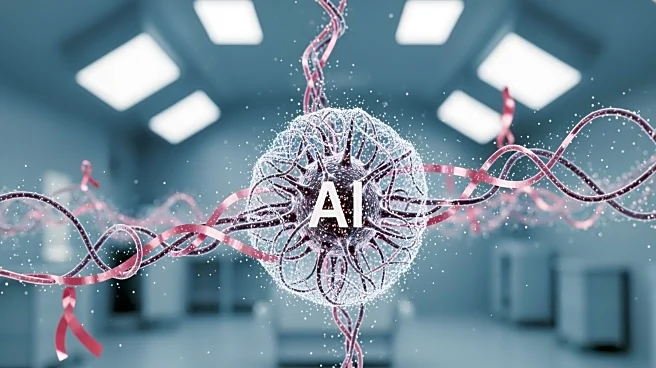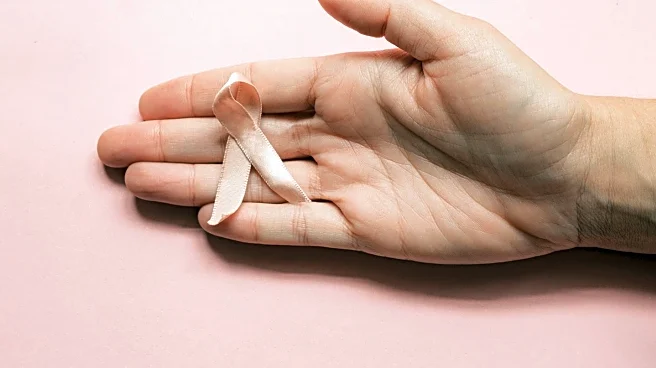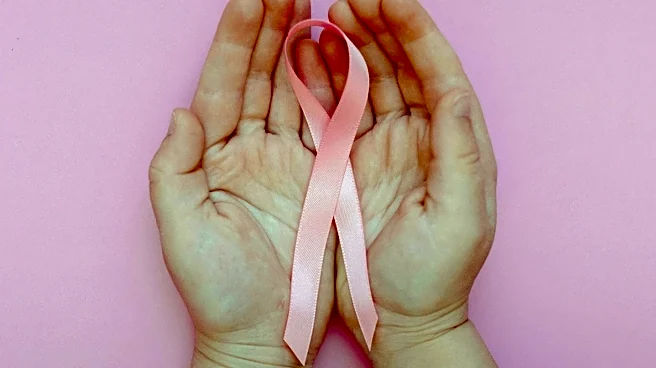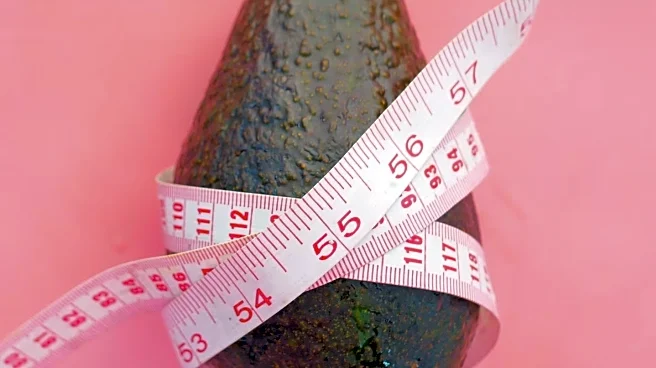What's Happening?
A recent discussion on the 'Finding Flow' podcast series, hosted by Samantha Skey, has brought attention to the often-overlooked period between a breast cancer diagnosis and the start of treatment. The
series features conversations with breast cancer survivors and advocates, focusing on how this waiting period can be used constructively. Jeanelle Adams and Tami Eagle Bowling, both breast cancer survivors, shared their experiences of turning this time into an opportunity for advocacy and personal growth. Adams, who was initially misdiagnosed, became a policy lobbyist to improve screening practices, while Bowling, diagnosed with metastatic breast cancer, focused on maintaining a positive mindset for her family.
Why It's Important?
The period between diagnosis and treatment is critical for patients, offering a chance to process the diagnosis and prepare mentally and emotionally for the journey ahead. Highlighting this phase can lead to better support systems and resources for patients, potentially improving outcomes and quality of life. Advocacy efforts by survivors like Adams and Bowling can drive policy changes and raise awareness about the importance of accurate and timely diagnoses. This focus on the 'in-between' time underscores the need for comprehensive care that addresses both the physical and emotional aspects of cancer treatment.
Beyond the Headlines
The stories of Adams and Bowling illustrate the power of personal advocacy and the impact of mindset on health outcomes. Their experiences highlight the importance of patient empowerment and the role of community support in navigating a cancer diagnosis. This narrative also sheds light on the broader healthcare system's need to address gaps in patient care, particularly in the diagnostic phase. By sharing their journeys, these survivors contribute to a cultural shift towards more holistic and patient-centered approaches in cancer care.
